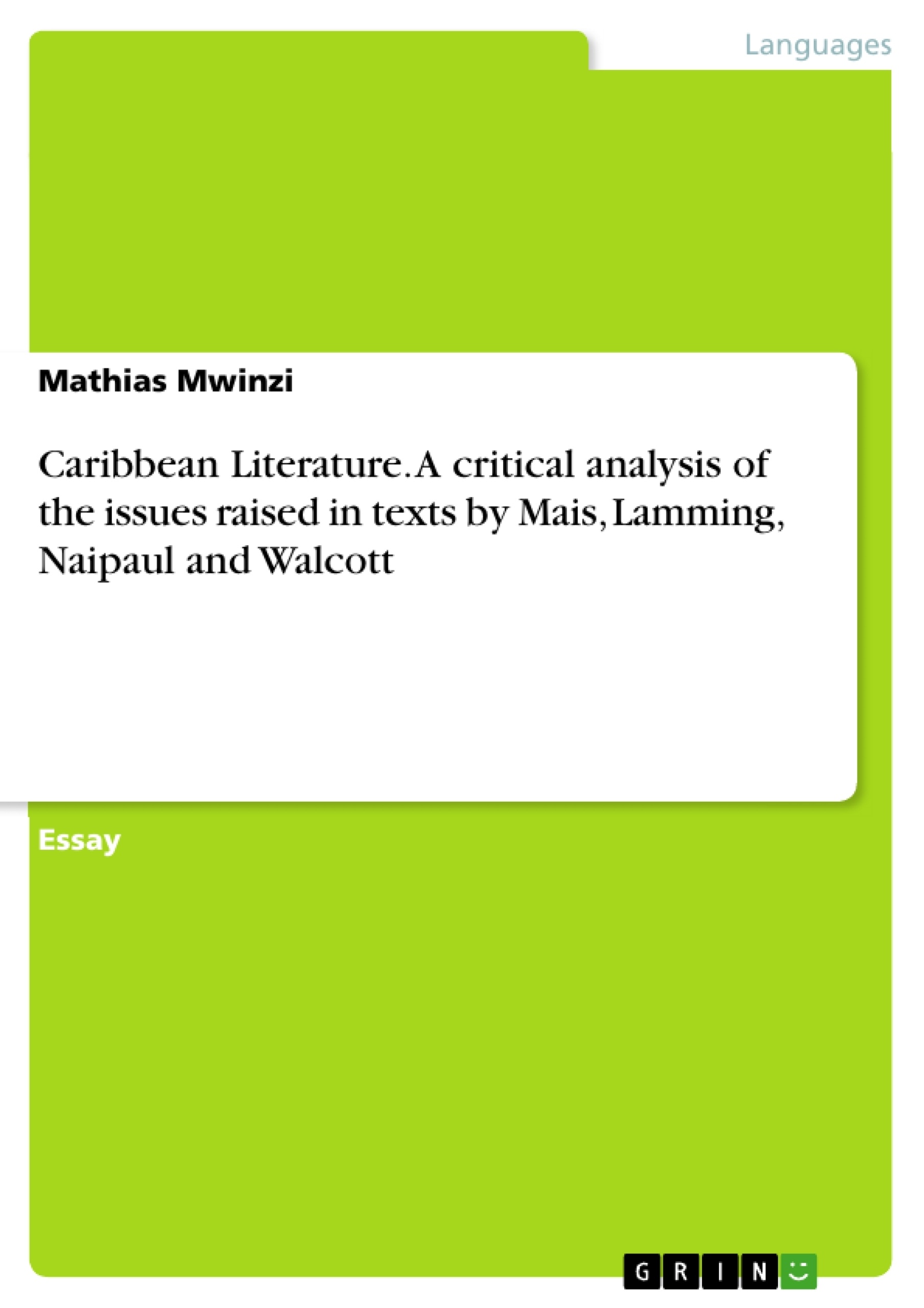Caribbean literature is the combination of works from the islands of the Caribbean. The Caribbean islands are also called the home of the noble savage because they were islands of primitive men. These islands have no large mass of land and are distant from the rest of the world. The attachment of the dwellers to their individual islands have been a problem to the growth of a broader and unified Caribbean culture. To most Caribbean writers their landscapes are an important aspect of literature.
The Caribbean writers have similar issues that they raise in their text because they share similar social, economical, political and historical challenges. This is because literature writers write texts that mirror their societies. Issues that are raised in literary texts from the Caribbean texts vary from discrimination, role of women, violence, weak family units and disillusionment
Table of Contents
- INTRODUCTION
- ALIENATION
- THE PLACE OF WOMEN IN THE SOCIETY
- CRIME AND IMMORALITY
- DISCRIMINATION
- CONCLUSION
- REFERENCE
Objectives and Key Themes
This paper examines the social, political, and cultural issues raised by four prominent Caribbean writers: Roger Mais, George Lamming, V.S. Naipaul, and Derek Walcott. Through critical analysis of their works, the paper aims to shed light on the shared experiences and challenges faced by Caribbean societies during the 20th century. The analysis focuses on key themes prevalent across these texts, providing insight into the lived realities of Caribbean people.
- Alienation and Identity Formation
- Social Disillusionment and Escapism
- Gender Roles and the Position of Women
- Crime and Immorality in Caribbean Society
- The Impact of Colonialism and Imperialism
Chapter Summaries
- Introduction: This section provides a brief overview of Caribbean literature, highlighting its unique characteristics and the shared social and political issues that inform the works of Caribbean writers. It introduces the four texts under analysis: Brother Man by Roger Mais, In the Castle of My Skin by George Lamming, Miguel Street by V.S. Naipaul, and The Dream on the Monkey Mountain by Derek Walcott.
- Alienation: This chapter delves into the theme of alienation as it manifests in the characters and settings of Miguel Street. The chapter explores the experiences of individuals struggling with a sense of isolation and displacement, particularly in relation to their social environment and their search for identity.
- The Place of Women in the Society: This chapter focuses on the representation of women in the selected texts, examining their roles, experiences, and social expectations within the context of Caribbean societies. It considers themes such as gender inequality, domesticity, and the impact of social norms on women's lives.
- Crime and Immorality: This chapter delves into the portrayal of crime and immorality in the chosen texts, highlighting the social consequences of these issues and their impact on individual lives. It explores themes such as violence, poverty, and the breakdown of traditional social structures.
- Discrimination: This chapter examines the themes of discrimination and prejudice in the selected texts, focusing on the experiences of individuals who face marginalization based on their race, social class, or other factors. It analyzes how discrimination shapes the lives of characters and contributes to broader social inequalities.
Keywords
The primary themes and concepts explored in this paper include Caribbean literature, alienation, identity, social issues, colonialism, gender roles, crime, immorality, discrimination, and the impact of historical events on contemporary Caribbean societies. The paper uses examples from four key texts to illustrate these themes and provide insights into the complex realities of Caribbean life.
- Quote paper
- Mathias Mwinzi (Author), 2016, Caribbean Literature. A critical analysis of the issues raised in texts by Mais, Lamming, Naipaul and Walcott, Munich, GRIN Verlag, https://www.grin.com/document/346417




